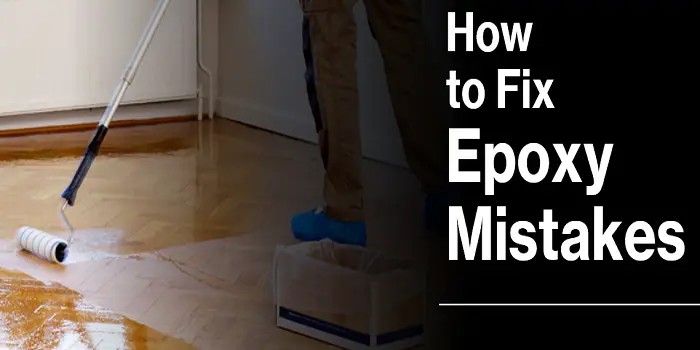
If you have excess house paint that you want to throw away after painting – it can be difficult to dispose of with your waste management company.
This is because paint creates a huge mess until it fully hardens.
The easiest and cheapest way to harden wet paint is to let it dry out naturally.
After your paint project, just place the leftover paint in several disposable cans or containers until you only have an inch or less in each vessel.
Then place them in the sunlight for heat to do its work.
But if you have more than an inch of paint left inside the can, this can take several days before you can throw them away.
Especially if you have several cans of paint left to dispose of and you do not want to wait that long, using a waste paint hardener additive to speed up the process is a viable option.
In the article below, I will discuss more on paint hardeners, how to use them, how safe they are, and what other ways you can employ to harden paint before throwing it away.
But before that, let’s understand what makes house paints dangerous and why it’s important to dispose of them safely.
What's Here in the Article:
Why is Paint Hazardous?
Different paints can be categorized as hazardous waste materials based on their characteristics.
While some are not so dangerous for the environment (plants and animals), there can be many that can turn out to be very dangerous if disposed of irresponsibly.
Waste paint hardener additives are therefore recommended to use before you dispose of them.
Following are the attributes you can look for which makes your waste paint hazardous…
1- Toxic:
Paints are often toxic if they contain materials like chromium, lead, or other metals.
They become harmful if accidentally ingested, allowed to leach into the ground, or pollute soil and groundwater.
2- Corrosive:
Certain paint products can corrode the materials like steel pipes and fixtures very aggressively.
They can even eat through the substances if not disposed of correctly, which can then cause extensive structural damages that can be hard to fix.
3- Reactive and Flammable:
Paint waste that has not been disposed of correctly can even become dangerous by changing its behavior based on other conditions.
Due to these hazardous properties of paints, they may release toxic gases, react with water, or can even cause fire or explosion under high temperatures.

DIY Paint Hardener for Safe Disposal
The problem with leftover liquid paint is you cannot simply throw them out with your regular trash unless you have it in a dried form.
Fortunately, you have a few economical options that can make it easier for you to harden and dispose of the paint safely.
If you have a small amount of leftover latex paint, the simplest way is to apply it to the old newspapers or cardboard boxes lying in your garage or storeroom. The paint will dry quickly, and you can then throw it away in the trash without any problem.
For larger amounts of paint, you will have to work a bit harder to get rid of them.
- Take a cardboard box or a large trash bag.
- Pour about half an inch of paint layer into it and allow it to dry
- Once it is completely dry, add an additional layer on top of it and let it sit for drying
- Repeat the process until you are finished with liquid paint
- Once all the paint is solidified, close the bag and dispose of it safely in a trash
Absorbent materials like sawdust, sand, cement or even kitty litter can help to expedite the hardening process.
You can add any of these items between the layers for faster drying of the paint before throwing away.
Cat litter for hardening paint is easy to find and also reasonably priced.
When using cat litter, make sure that you use the non-clumping type where the constituent litter particles remain as separate particles.
Sawdust is also the cheapest way to harden and dispose of the paint. Of course, if you work with wood and have sawdust lying around, it’s good to go with sawdust.
Once the paint dries, you can place them in the garbage can and leave the lids open so they will not be mistaken as full cans of paint.

Is Paint Hardener Additive Safe – How to Use?
Simply put, a waste-away paint hardener is a product that can harden larger amounts of paint within minutes.
The primary ingredient in most paint hardeners is a salt product that works by absorbing the moisture in the paint.
It works great with stains, as well as paints like latex and acrylics, so that it becomes acceptable for garbage pickup.
Products like Homax 3535 3 Pack Waste-Away Paint Hardener and XSORB Rock Solid Paint Hardener are among the best Eco-friendly formulas available on the market that offers non-toxic sound paint disposal method.
If you are planning to dispose of your leftover paint or stain, check these products – maybe they can prove helpful.
How to Use Paint Hardener?
Most paint hardening products come in a ready-mix package, so all you need to do is pour the paint hardener into the paint, stir it up, and let it set.
The hardener additive gets activated by water, so add about a cup of water to the mixture as you are stirring.
Once mixed, let the paint sit for about 30 minutes which is the required time that the hardeners take to work in most cases.
What you get will not be fully hardened paint but rather the paint that has the consistency of oatmeal.
The result will be much like a rubbery feel to the paint when you touch it.
Warnings and Risks
Remember, paint that is still in liquid form can escape the container to cover the garbage truck and roadway – as it can leak while moving.
Using a paint hardener will not make the paint fully hardened but makes it pretty safe to dispose of since it will not spill out of its can.
However, you will need to be careful when using a paint hardener additive because the ingredients may cause irritation if it touches your eyes or if you happen to inhale the product.
While the irritation is mostly mild, there might be a few people who can have a serious reaction.
It is, therefore, best to wear gloves, eye protection, and a mask or respirator if you are sensitive to dust.
While your skin is more resilient, it too can be irritated by prolonged exposure to the dust generated by the paint hardener.
This is where the gloves can be handy, along with a long-sleeve shirt.
Once you have mixed the paint hardener, step away and remove the gloves, eye protection, and mask (or respirator) and clean them thoroughly.
What to Do if You Cannot Dispose of the Paint Properly?
Although you are not supposed to toss out liquid paint due to its hazardous properties, there are still ways you can use the responsibly without causing any harm.
If you are wondering what you can do with leftover wet waste paint, here are my favorite options…
1- Use to fix small projects
It can be a fun DIY project, especially if you have extra leftover paints with bright and vibrant colors.
Instead of tossing them out, use them to paint boring small spaces like your bookshelf, inside the cabinet, trims, stairs or steps, old picture frames, antique figurines, legs of wooden chairs or tables, or other vintage furniture.
2- Take them to a disposal center
Unlike latex paints that can be disposed of at home, oil-based paints can be difficult to dispose of due to their hazardous nature.
You can, however, take them to a recycling center by finding your closest drop-off location near you on the internet.
Before taking the paint to them, you can enquire about what paint products they actually accept and in what quantities.
If you want, you can even consider donating the waste paint (that is in good condition) to the nearby churches, theaters, local schools, or community centers.
They may often need the paint for their renovation projects but may have a limited budget to buy them fresh.
3- Store them for future household use
Latex (or water-based paints) generally comes with a shelf life of 10 years.
If it’s enamel (or oil-based paints), they can last for up to 15 years.
The only thing you need to keep in mind is to store them properly.
Below are the few steps you can follow to keep your excess paint in good condition…
- Smell the paint to check if it’s still in good condition and can be stored
- Pour the leftover paint back into its original can and securely place the lid using a rubber mallet
- If there is any paint in the grooves, wipe it clean using a rag or old piece of cloth
- Store the paint container securely in the basement or a closet that is far from the reach of children
- Use a marker to label the purchase date of the paint, its brand, product type, color, etc. on the container
Final Thoughts
There are many different ways to harden your old paint for throwing away.
Most paints, if left in the open, will dry out naturally without a hardener.
Hardeners are only needed to speed up the process, especially when you have a large amount of paint to dispose of.
So, choose them wisely and keep the risks in mind so that you can keep your family and other members around you safe.
Share the post "DIY Paint Hardener for Safe Disposal (Different Ways)"

Douglas Becker (aka Painter Doug) has over twenty years of experience as a painter in Adkins, Texas. At present, he resides in Florida with his family.
From painting multi-storeyed houses, condos, and apartments to large commercial buildings and small offices, he had served various customers in areas not only in Adkins but also in Southwest Florida, Sarasota, Naples, and many more. To know more about him check here.




